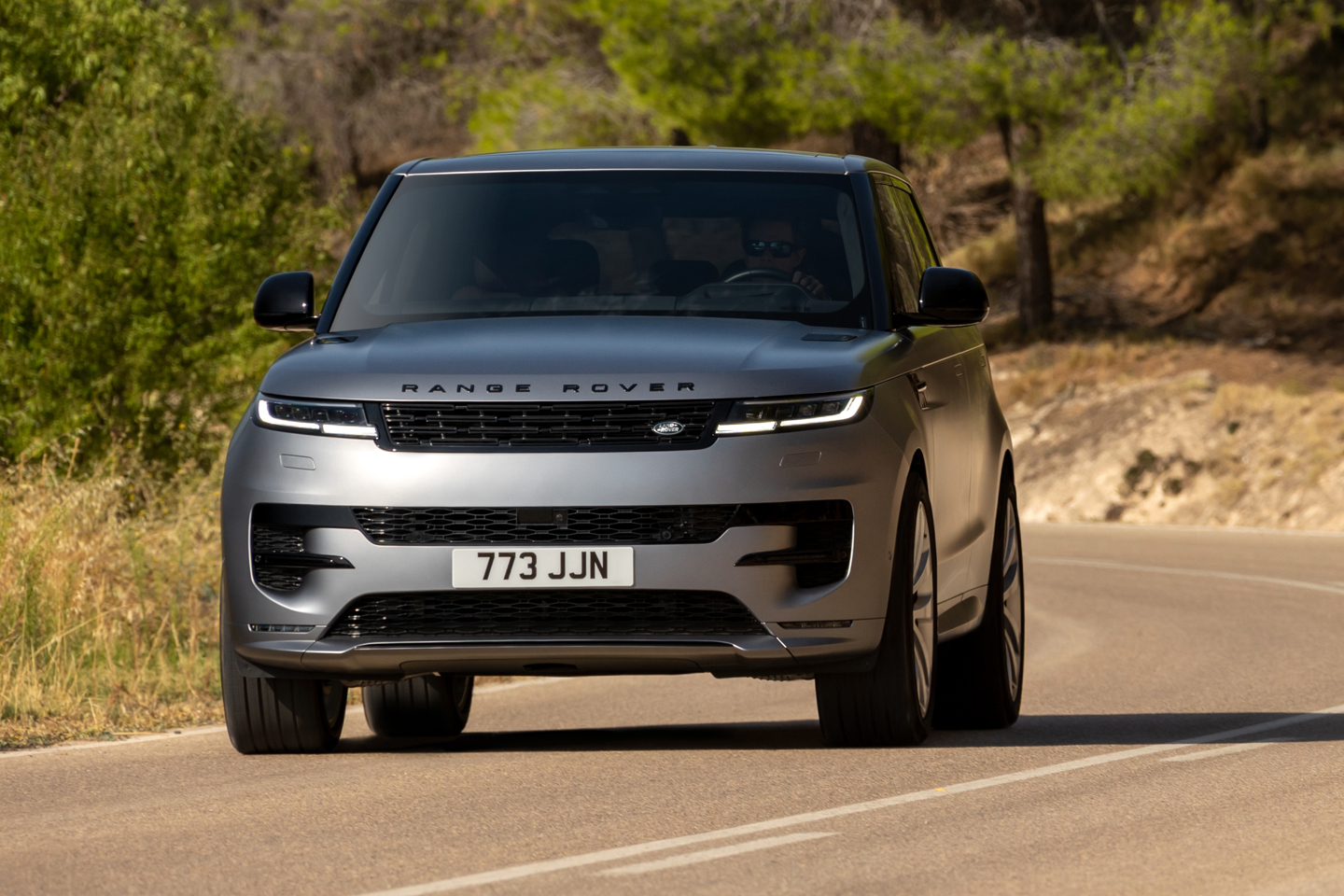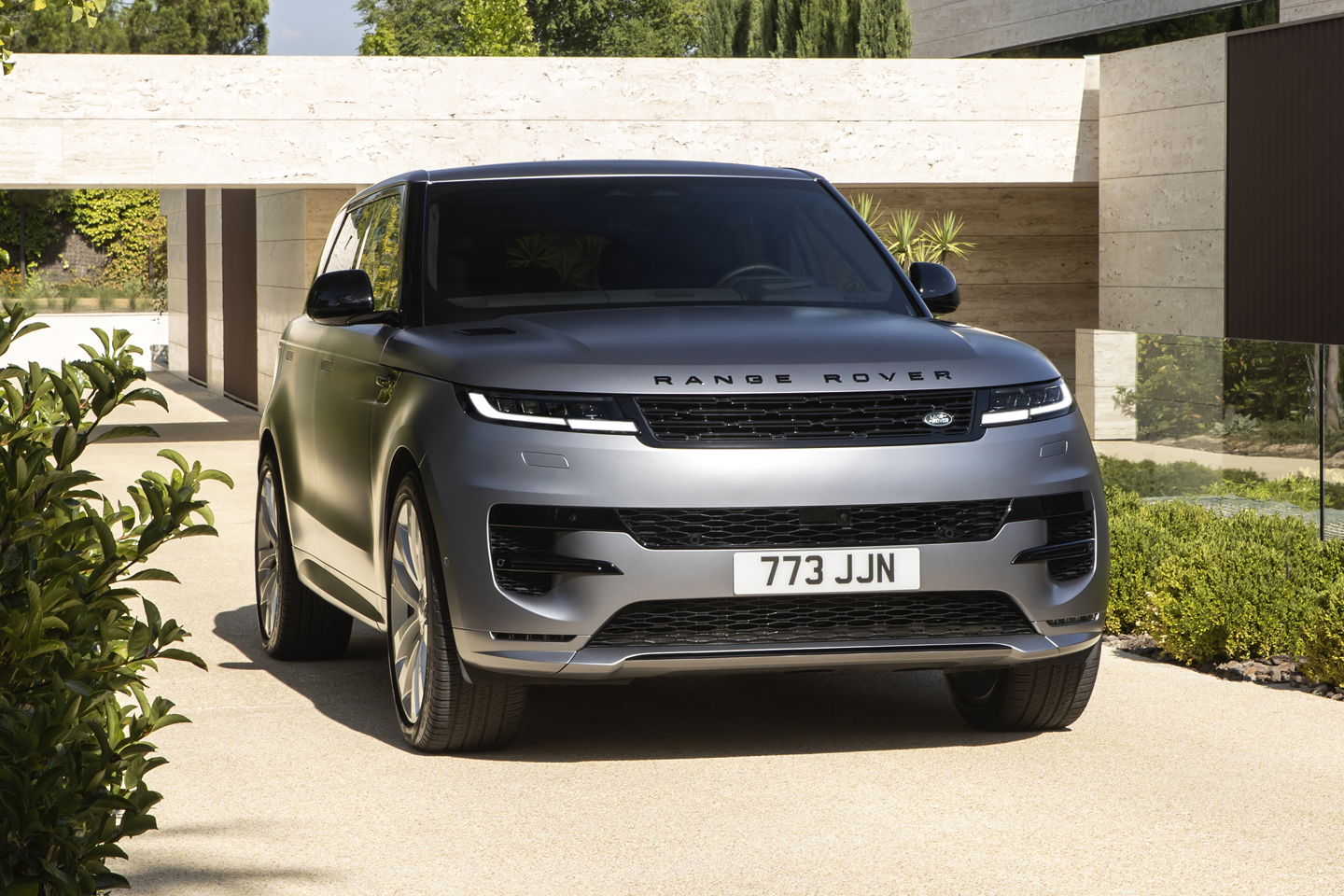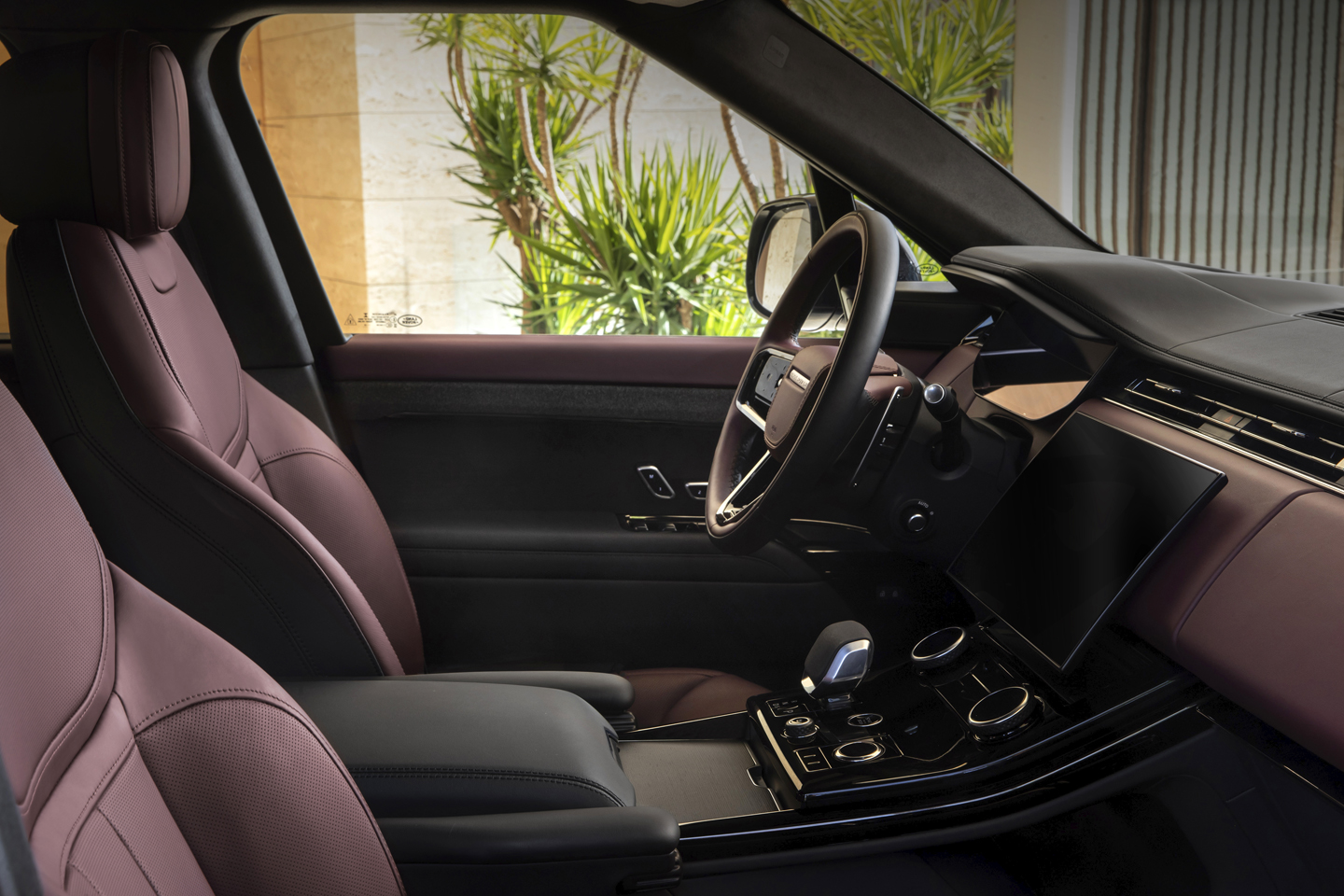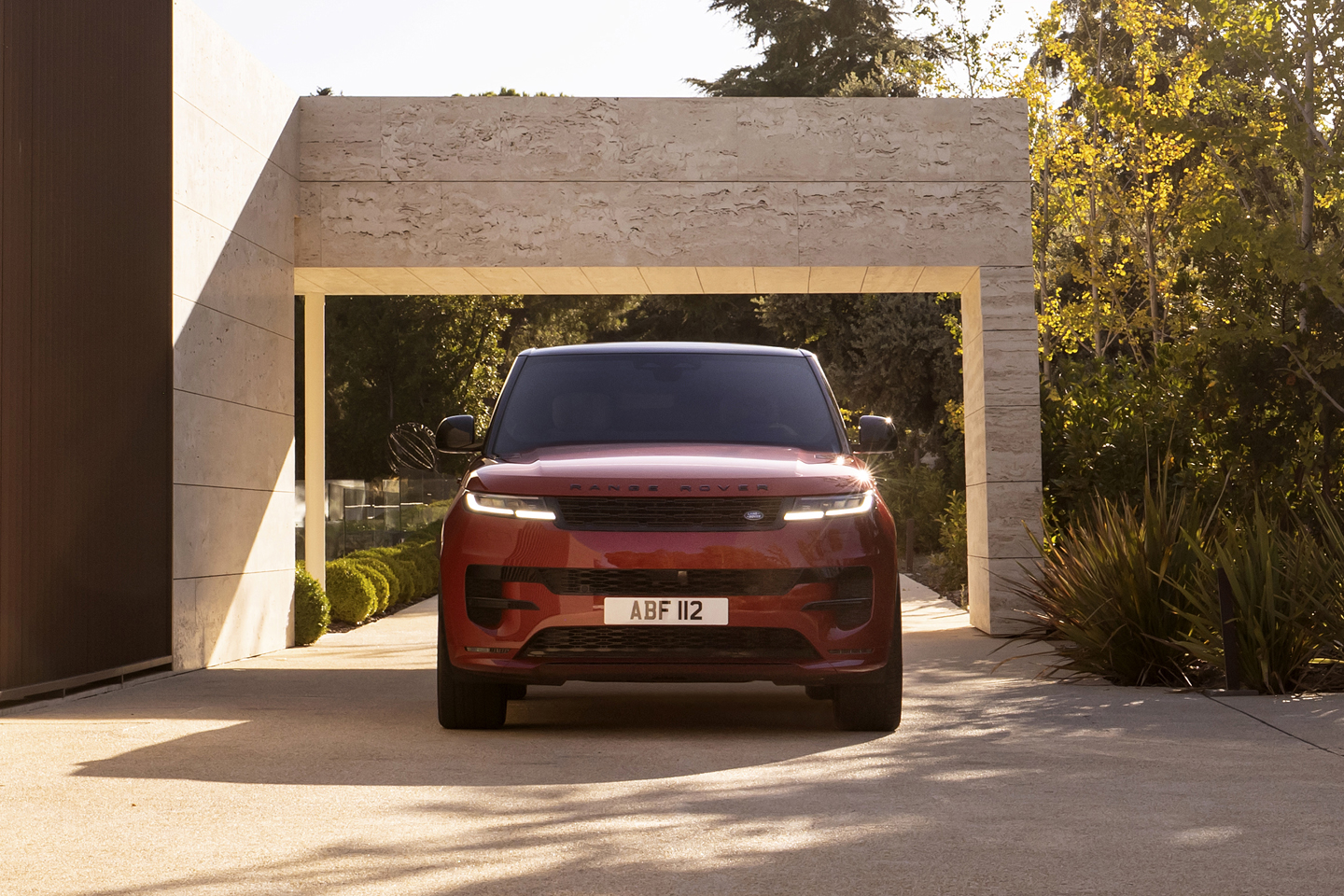2023 Range Rover Sport | PH Review
Land Rover's idea of a sporty SUV is quite unlike anyone else's. Expect buyers to vote for it en masse...

There can be only one. No, not Highlander – Range Rover. That’s what people used to say about Range Rover in the good old days. Which turned out to be absolute poppycock, of course, because one became two, then three and then four. Who knows, there may be even more Range Rovers someday. And rather than this massive expansion diluting the brand, it’s been quite the opposite: a case of divide and conquer. Has Range Rover ever been in ruder health? Whether it’s the latest full-fat model (the L460) that was introduced earlier this year, the Evoque, Velar or Sport, they just cannot build ‘em fast enough. The world, it seems, is still hell-bent on a Range Rover love-in.
It’s almost blind faith. There’s every chance the boys from Solihull could slap a Range Rover badge and a set of 23-inch rims onto a shopping trolley, tell you it’s the new Range Rover Sport, and someone out there would still stump up the £80,325 starting price. They haven’t done that, though, and the new Sport (code-named the L461) is far from a cynical revamp. But you can have 23-inch rims if you want.
As far as the Sport is concerned, it’s an all-new model, but underpinning it is pretty much everything that we’ve seen with the latest full-fat Range Rover. This is a good thing, because we rather like the current Range Rover. The MLA-Flex architecture that sits at its core was part of a huge investment programme by JLR. Many thousands of hours’ work and at least 125 registered patents later, the result is a platform that’s bang up to date. It’s 35 per cent torsionally stiffer than what’s gone before; it’s capable of running all the latest assistance systems; it’s ushered in new features, such as over-the-air software updates and rear-wheel steering; and all that combined with massively improved NVH levels. And it will see the Range Rover and this new Sport into the electrified future, with a range of plug-in hybrids that are available now, along with the full battery versions that will arrive in 2024.


Another thing that’s new for this generation of Sport is Matt Becker. The ex-Lotus and Aston dynamic’s guru is a fitting replacement for Mike Cross, who retired from JLR last year. Becker was on hand to talk us through the new Sport and some of the challenges of working for a much larger operation like JLR. The size of the team for a start. Becker told me that at its height, the engineering team at Aston numbered around 700. At JLR it’s currently knocking on the door of 10,000. He's good for a few juicy quotes, too, because he's a straight talker and good-humoured type. He told me he thought simulators "were a load of b*ll*cks" until he started using them for development work at Aston, and found them "extremely helpful". Now he's at JLR he has access to two: one that's 15-years old and another that's just been finished and is state-of-the-art. On the subject of simulators, he also mentioned that Cross used to come out "as white as a sheet" after using them. They'd make him travel sick, which apparently is quite common. Happily, it’s not something he suffers from, though.
After he started, Becker organised a drive of the prototype L461 to the Nürburgring. This wasn’t about doing laps of the ‘Ring, but seeing JLR’s testing facility over there, getting to know his team (he said he much prefers face-to-face meetings than Zoom calls) and he also wanted to understand the new car and its rivals better. Becker had a hand in the L460, but by the time he joined that was mostly finished. This is the first JLR project that he’s had real influence over, and after driving it to Germany he said straight away "it needed further differentiating from the Range Rover". It needed more of a sporting identity.
That's always been the funny thing about the Range Rover Sport. The original Sport (the L320 that arrived in 2005) was based on the Discovery platform, including its heavy monocoque body mounted on a ladder chassis. I can remember three things about that Sport: the seats were great, it looked ungainly, and it really wasn’t that sporty. At best they should’ve called it the Range Rover Sportier.


So to get the third-generation Sport more on point with its name, there are a few key differences between this and the bigger car. Starting with the use of switchable-volume air springs, which replace the single-chamber springs from the bigger Range Rover. These offer greater scope to limit roll, pitch and dive, while also keeping the car pliant. The dampers are the same Bilstein twin-valve mono tubes but with new damping rates. The rear-wheel steering, which moves by up to 7.3 degrees, has also been re-calibrated. It’s not standard, though, and nor is the 48-volt active anti-roll system. Both are on big brother, but on the Sport you have to opt for the P530 V8 or the P510e plug-in to get them. Or you can add the £5,330 Storm Handling pack, which also adds an electronic rear differential into the mix.
On the launch I tried a spread of engines, starting with the P530 V8. I drove this last week in the full-sized Range Rover and the conclusion was “nice but not really necessary”. Well, it’s the same here. Nice, because it has 530hp, so it’s easily the most determined of all the engines available – hitting 0-62mph in just 4.5 seconds. And it revs out with a proper crescendo, while delivering this lovely, refined, off-beat V8 woofle. There are some slight driveability issues, though. It’s a little light on pull-away torque, and once you’re past that it tends to flare a fraction as the boost comes in, leading to some slow-speed lurching. You’ll also struggle to hit 20mpg, which is why it feels unnecessary, especially when there are many excellent alternatives. These include...
If you’re wedded to the idea of petrol, then how about the P400 as a more sensible bet? For a start, the mild hybrid tech makes it less snatchy at low revs, so if you’re stuck in traffic or pulling away from junctions, you’ll actually find the take-off tends to be smoother. And it sounds smooth, too. All the way to the red line, but instead of a woofle, it's a pleasing six-cylinder howl with some turbocharged rush as the revs climb to maximum. I wouldn’t say it’s the most exciting power delivery – it’s quite linear and doesn’t finish with a flourish – but it’s undoubtedly quick and more wallet-friendly, too. Officially, it'll hit 0-62mph in 5.7 seconds and 30mpg, though not at the same time.


But the mild hybrid diesels are, to me, still the obvious choice. And I say that with the caveat that I didn’t get to drive the D300, which was the only diesel on the launch, but I know how good that is from previous experience. The more powerful D350 is better still. It was downright superb in the Sport’s bigger brother, so is it likely to be any different here? Logically, I doubt it, and I wouldn’t bet against it ending up the pick of the range. It offers supreme driveability for a start, thanks to its easily accessed 516lb ft of torque. And it delivers sub-six-second acceleration, smooth six-cylinder tones and 35mpg officially (I actually saw 40mpg in the big Range Rover without trying). What’s not to love there?
Well, perhaps simply that it’s a diesel, I suppose. That is a shame but it’s the way it is, which brings us to the plug-ins. If you want to have the cheapest company car tax then this is the only way until the BEV arrives. There’s no real compromise, though. Having tried the most powerful P510e, it’s an excellent alternative to DERV to be fair. Not perfect – I noticed some driveline shunt on and off throttle – but otherwise the engine and eight-speed transmission work seamlessly together 99 per cent of the time. There's a slight step if you floor it in EV mode when the engine comes in at maximum attack, but that's forgivable. And it’s wonderfully quiet while driving on the electric motor, which it’ll do for 70 miles on the WLTP cycle (around 50 miles in reality). Charging from 0 to 80 per cent with 50kW DC charger takes under an hour, or around five hours if you're using a three-pin plug. And don't think it’s boring, either. There’s the same delectable six-cylinder tone as the P400 when the petrol engine is running, only here the power delivery is more engaging. It has all the low-end flexibility you need but also builds in intensity all the way to the limiter. On the way there it’ll chalk up 62mph in 5.4 seconds, so it’s rapid as well.
What about the Sport’s handling? Well, it still doesn’t feel up there with a Cayenne on ultimate cross-country pace that’s for sure. Talking to Becker, this was never the target, though. Instead, it was to create a package that, much as always, offers a luxury car feel with a comfortable ride, allied with added capability if you decide to press on. And the ability to head far off-road, naturally, which we did, and I’ll get onto that in a bit.


The Sport’s re-tuned rear-wheel steering is more aggressive than it is on the Range Rover. Sometimes, but not always, you can feel it moving the car from the rear as you turn in to a bend at speed – rather than just when you're in town and it's helping you around tight turns. Overall, the Sport’s steering feels slower than a Cayenne’s, though, and there’s none of the Cayenne’s tactility in terms of the surface being mapped at your fingertips. It makes it remote, sure, yet along a snaking Spanish mountain road you can tease the Sport along easily on a light touch because it’s quite accurate.
There’s a decent sense of connection around the centre in the P400 and P510e. The P530 V8 takes a few more degrees before the weight builds and keys you into the experience. I noticed the same trait with the steering in the full-size Range Rover V8, actually. In any Sport, when the weight comes, it comes quite quickly. Noticeably quicker than it does in the Range Rover, and I found myself missing the bigger car’s more relaxed set-up. The Sport seems like it’s trying a touch too hard. Instead of a mid-bend holding torque there’s more shove, like it’s trying to return the wheel to centre. It’s not poor by any means, just not altogether natural.
The main thing is it’s still a big car. You feel this in its width on narrow roads and in the way it wants push on when you start attacking turns. However, it’s far more stable than the big Range Rover – chalk and cheese, in fact. It doesn’t lean anywhere near as much, and there’s enough grip and good manners for it to be effective – just not incisive. It’s not a car you hustle for pleasure, but it is a car that you can hustle if you want to get somewhere in a hurry.


The brakes, like the steering, have been given more bite, too. Again, for some reason, I didn’t gel with the V8's as much, which seemed a bit snatchy. The pedal was easier to meter in the other versions I tried – that includes the PHEV as well – with more progression on light to mid duties. Really hit the pedal hard and it goes a bit wooden but the stopping power is effective.
As I said, all the cars I was given were dripping in handling aids, so I cannot tell you what a standard Sport is like on, say, passive roll bars and without rear-wheel steer. That assessment will have to wait for another day. I can tell you that the versions I tried rode well, though. It’s firmer than the regular Range Rover, which you feel over sharp compressions, but in the main there’s no jolts. No jerks. Indeed, over one section of really poor road, which was so broken down it was almost a cobblestone effect, it damped out the imperfections amazingly well. And it still has just enough of the float – that last bit of elasticity over long-wave undulations – to give the ride a real plush, luxurious feel. When you feel it happen, you can't help muttering to yourself "Now, that was nice", because it is.
The lack of road noise is another aspect that justifies the Sport’s ever-grander price tag - the P530 First Edition is a whopping £116,190, by the way. At times it really is deathly quiet if you’re in a car fitted with the noise cancelling tech. This comes with the top-end stereo. It uses six microphones, all located in the front and rear wheel arches, that sample unwanted noise, then convert this to ‘anti-noise’. This is played through speakers in the front and rear headrests. As I say, it works brilliantly, and even without that system the Sport still doesn’t produce much rumble unless the surface is particularly coarse. Wind noise, on the other hand, can get a little gusty. Maybe part of the reason you notice this is because the rest of the car's so quiet, but I do think it's an area that needs looking at.


So yes, it’s beaten on-road by a Cayenne, or an X5 for that matter, but off-road – well, there’s simply no contest. The Sport now comes with Terrain Response 2 that has Adaptive Off-Road Cruise Control (an evolution of All Terrain Progress Control), offering pre-set speeds to allow the driver to focus on steering, as well as Configurable Terrain Response and even a Wade Mode for the perfect bow wave to keep you going through water up to 900mm deep – the doors are sealed against water ingress and the engine breathes around the top of the bonnet. And the other crucial stats are a maximum ground clearance of 281mm, a maximum articulation of 546mm, an approach angle of 33 degrees, a breakover angle of 26.9 degrees and a departure angle of 30 degrees. All of those numbers take a small tumble if you opt for a Dynamic model (with sportier bumpers) or a PHEV (with more vulnerable batteries). It all means it’ll do things off-road that seemed inconceivable prior to tackling them. I am talking genuinely, bottom-clenching descents over loose ground; things that had even the Sport's wheel articulation at full stretch and beyond and the car rocking with two wheels in the air. But it managed it all. Everything. On and on it plodded relentlessly with a bit of expert guidance – for me, not the car.
Inside, the Sport is very much like the bigger Range Rover. The driving position is superb, as are the seats, which support you supremely well for hour after hour – and we did a fair few hours after two days at the wheel. The materials look smart, too, and there’s a huge array of options to spec it how you wish – including multiple variations of veneers and vegan trim or natural leathers. Press and prod the interior and it’s very well put together as well, and most of the switchgear is lifted straight from the bigger model. The difference is mainly around the centre console, which here is a floating design that sets the climate control buttons – notice the word 'buttons', not icons – at a shallower angle than the ‘proper’ Range Rover. You don’t feel short-changed, that’s for sure. Reliability? Well, we'll have to see about that, but nothing dropped off during these miles together.
Other similarities with the bigger car include the Pivi Pro infotainment, which, as I mentioned, comes with over-the-air updates as well as standard Amazon Alexa. It’s operated through the same, centrally mounted 13.1-inch central curved touchscreen, running the same software as the Range Rover. It really is the same, which means it works well. The menus need some acclimatising to but they’re not befuddling for long, and when you press an icon the response time is usually swift. The screen also looks sharp – literally, as in the definition (including the 13.7-inch driver display) and metaphorically, as in the graphics. The slot for the 15-watt wireless charger is my only gripe – it’s just under the infotainment screen and so deep it swallows your phone, making it easy to walk off and forget it.


Because the Sport has the same wheelbase as the larger car, it’s just as large inside, too. Makes sense, doesn’t it? This means that if you’re like me (tall and gangly) you’ll have plenty of head and legroom in the front, and because it’s so wide, loads of space to spread out sideways as well. In the rear, I can fit behind my driving position with a slither of knee room to spare. Other ‘normal’ people with ‘normal’ legs keep telling me I am just a freak and, in fact, it's ridiculously spacious. As is the boot, which won’t have trouble swallowing luggage for five, albeit without the classic split tailgate.
So the Range Rover Sport, then… After all these years, the truth is it’s still not that sporty, but it still has nice seats and it looks way better than the original. And all that's fine. It never was trying to be a full-bore rival to the Cayenne and it still isn’t. It’s a car you can pick up the pace in and not fall off the road, but when you do go off-road, my God it keeps going and going. It's not about lap times, though. Those are for the nouveau brigade of high-end SUVs. This is doing sport the Range Rover way: by not being terribly sporty at all. Instead it's rather quiet and comfy and well mannered. And why change? It’s a formula that’s worked very well so far. So I reckon the other thing that won't change is the sales. Land Rover will sell bucket loads of these things, and it deserves to as well.
Specification | 2023 Range Rover Sport P400
Engine: 2,996cc, straight-six, turbocharged, mild hybrid
Transmission: 8-speed automatic, four-wheel drive
Power (hp): 400 @ 5,500-6,500rpm
Torque (lb ft): 406 @ 2,000-5,000rpm
0-62mph: 5.7 seconds
Top speed: 150mph
Weight: 2,310kg (DIN)
MPG: 30.1 (WLTP)
CO2: 213g/km (WLTP)
Gassing Station | General Gassing | Top of Page | What's New | My Stuff



